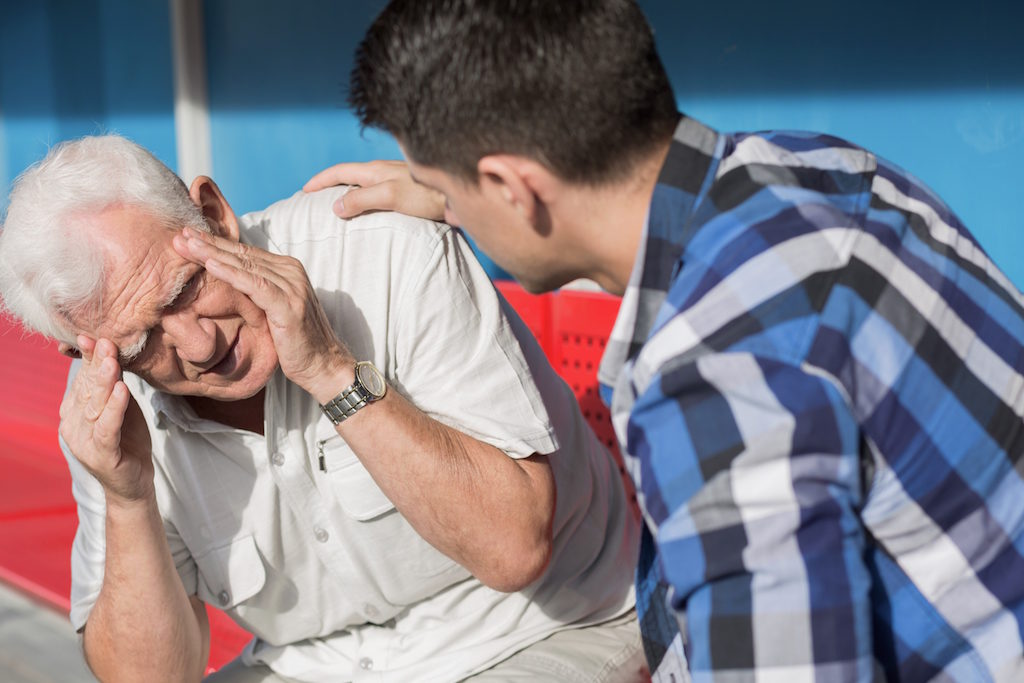A stroke occurs when the blood supply to the brain is disrupted or reduced. This deprives the brain of oxygen and nutrients, which can cause the death of brain cells.
This type of situation can be caused by a blocked artery (ischemic stroke) or by loss of blood or rupture of a blood vessel (hemorrhagic stroke). It is also possible that some people suffer only a temporary interruption of blood flow to the brain (transient ischemic attack).
Causes and Types of Stroke
Ischemic stroke
Approximately 85 percent of strokes are ischemic. Ischemic stroke occurs when there is a narrowing or blockage of the arteries leading to the brain, which causes a severe reduction of blood flow (ischemia). Some of the most frequent strokes are:
Thrombotic stroke. It occurs when a blood clot (thrombus) forms in one of the arteries that supplies blood to the brain. A blood clot can be formed by fatty deposits (plaque) that accumulate in the arteries and cause a reduction of blood flow (atherosclerosis) or other diseases of the arteries.
Embolic stroke. It occurs when a blood clot or other particles form away from the brain, often in the heart, and move through the bloodstream to lodge in narrower brain arteries. This type of blood clot is called a "plunger."
2. Hemorrhagic stroke
Hemorrhagic stroke occurs when there is a loss of blood or a rupture in a blood vessel in the brain. Brain haemorrhages can occur from many diseases that affect blood vessels, such as uncontrolled high blood pressure (hypertension), over-treatment with anticoagulants, and weak areas in the walls of blood vessels (aneurysms).
A less frequent cause of bleeding is the rupture of an abnormal tangle of blood vessels with weak walls (arteriovenous malformation) present at birth.
Risk factor's
Many factors can increase the risk of a stroke. Some factors can also increase your chance of having a heart attack. The risk factors for stroke that can be treated are:
Lifestyle factors associated with risk
Overweight or obesity
Physical inactivity
Episodes of very high alcohol consumption
Consumption of illegal drugs, such as cocaine and methamphetamines
2. Medical risk factors
High Blood Pressure: The risk of stroke begins to increase when blood pressure values are greater than 120/80 millimeters of mercury (mm Hg). Your doctor will help you determine the target value of your blood pressure based on your age, diabetes, and other factors.
Smoking or passive smoking.
High cholesterol.
Diabetes.
Obstructive sleep apnea: sleep disorder in which the oxygen level decreases intermittently at night.
Cardiovascular diseases, such as heart failure, heart defects, heart infection or abnormal heart rhythm.
Other factors associated with a higher risk of stroke are:
Personal or family history of stroke, heart attack, or transient ischemic attack.
Be over 55 years old.
Race: African Americans are at greater risk of stroke than people of other races.
Gender: Men are at higher risk for stroke than women. Usually women suffer a stroke at an older age, and are less likely to survive stroke than men. They may also have some risk due to the use of birth control pills or estrogen-containing hormonal therapies, as well as pregnancy and delivery.
symptom
Look at these signs and symptoms that think you or someone else may be having a stroke. Keep in mind when your signs or symptoms begin, as their duration may affect treatment decisions:
Problems to talk and understand. You can have confusion. You can drag the words or have difficulty understanding speech.
Paralysis or numbness of the face, arms, or legs. You may have sudden numbness, weakness or paralysis on the face, arms or legs, especially on one side of the body. Try to raise your arms up the head at the same time. If an arm begins to fall, you may have a stroke. Also, one side of the mouth may fall off when you try to smile.
Difficulties to see with one or both eyes. You may suddenly have blurred or blackened vision in one or both eyes, or you may see double vision.
Headache. An intense and sudden headache, which may be accompanied by vomiting, dizziness or an altered state of consciousness, may indicate that you are having a stroke.
Problems walking. You may stumble or have sudden dizziness, lose balance or lose coordination.
How to act
Get immediate medical attention if you notice any sign or symptom of stroke, even if they seem to fluctuate or disappear.
Think "FAST" and do the following:
Arms. Ask the person to raise both arms. Does one of the arms go down? Or, can not the person lift one of the arms?
Speaks. Ask the person to repeat a simple phrase. Drag the words strangely
Weather. If you notice any of these signs, call the local emergency number immediately.
Call the local emergency number immediately. Do not expect the symptoms to go away. Every minute counts. The longer it takes to treat stroke, the greater the chances of brain damage and disability.
If you suspect the person with what you are experiencing is attempting a stroke, vigilance and emergency care.
Fuente: buenavibra.es
